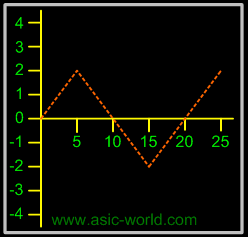|
|
| |
|

|
|
|
|
| |
|

|
| |
 |
Introduction
|
|
|
I started studying digital electronics in the first months of year 1989; at that time I wanted to build digitally controlled volume and tuning for an AM RADIO. I was a 100% analog engineer and digital electronic concepts were new to me. It is an entirely different story so I failed miserably the first, second, third, ...... (n+1)th time to design a working model of the above. When I started, I was fascinated by the binary system and by the way microprocessors work. It took me nearly one year to fully understand the concepts of digital. Digital means anything which has to do with digits, but in today's world digital means CMOS, TTL gates, flip-flops, processors, computers. In the next few pages I will be sharing my knowledge, experience and also some tidbits from my friends and from the net. You are always welcome to suggest and help me make this page really useful for the whole digital world. |
| |
|

|
| |
 |
Numerical Presentation
|
|
|
The quantities that are to be measured, monitored, recorded, processed and controlled are analog and digital, depending on the type of system used. It is important when dealing with various quantities that we be able to represent their values efficiently and accurately. There are basically two ways of representing the numerical value of quantities: analog and digital. |
| |
|

|
| |
 |
Analog Representation
|
|
|
Systems which are capable of processing a continuous range of values varying with respect to time are called analog systems. In analog representation a quantity is represented by a voltage, current, or meter movement that is proportional to the value of that quantity. Analog quantities such as those cited above have an important characteristic: they can vary over a continuous range of values. |
| |
|

|
|
|
|
| |
|

|
| |
 |
Diagram of analog voltage vs time
|
| |
|

|
|
|
 |
| |
|

|
| |
 |
Digital Representation
|
|
|
Systems which process discrete values are called digital systems. In digital representation the quantities are represented not by proportional quantities but by symbols called digits. As an example, consider the digital watch, which provides the time of the day in the form of decimal digits representing hours and minutes (and sometimes seconds). As we know, time of day changes continuously, but the digital watch reading does not change continuously; rather, it changes in steps of one per minute (or per second). In other words, time of day digital representation changes in discrete steps, as compared to the representation of time provided by an analog watch, where the dial reading changes continuously. |
| |
|

|
|
|
Below is a diagram of digital voltage vs time: here input voltage changes from +4 Volts to -4 Volts; it can be converted to digital form by Analog to Digital converters (ADC). An ADC converts continuous signals into samples per second. Well, this is an entirely different theory. |
| |
|

|
| |
 |
Diagram of Digital voltage vs time
|
| |
|

|
|
|
 |
| |
|

|
|
|
The major difference between analog and digital quantities, then, can be stated simply as follows: |
| |
|

|
|
|
- Analog = continuous
- Digital = discrete (step by step)
|
| |
|

|
| |
 |
Advantages of Digital Techniques
|
|
|
- Easier to design. Exact values of voltage or current are not important, only the range (HIGH or LOW) in which they fall.
- Information storage is easy.
- Accuracy and precision are greater.
- Operations can be programmed. Analog systems can also be programmed, but the available operations variety and complexity is severely limited.
- Digital circuits are less affected by noise, as long as the noise is not large enough to prevent us from distinguishing HIGH from LOW (we discuss this in detail in an advanced digital tutorial section).
- More digital circuitry can be fabricated on IC chips.
|
| |
|

|
| |
 |
Limitations of Digital Techniques
|
|
|
- Most physical quantities in real world are analog in nature, and these quantities are often the inputs and outputs that are being monitored, operated on, and controlled by a system. Thus conversion to digital format and re-conversion to analog format is needed.
|
| |
|

|
| |
|

|
| |
|

|
|
|
|
| |
|

|
|
|
|

|

|

|
|

|
|
Copyright © 1998-2025 |
Deepak Kumar Tala - All rights reserved |
|
Do you have any Comment? mail me at:deepak@asic-world.com
|
|